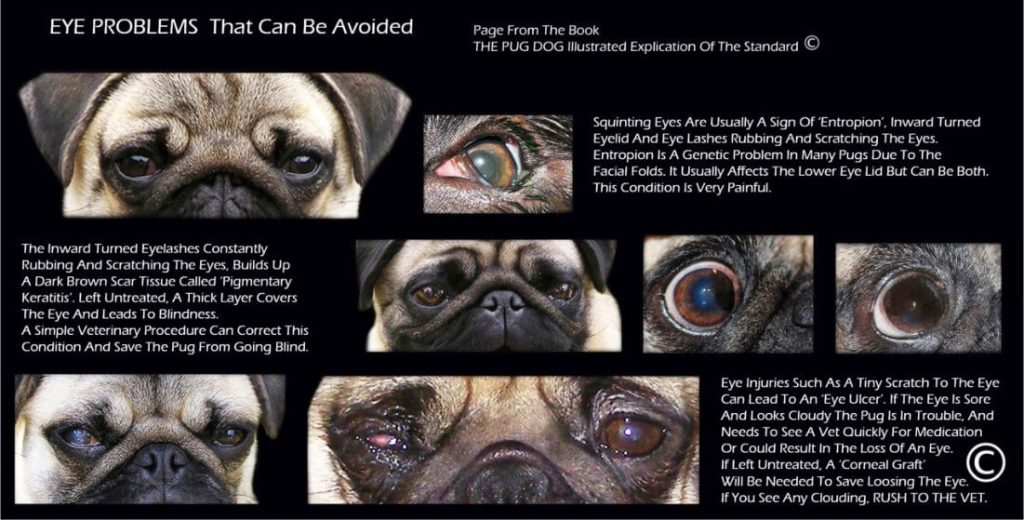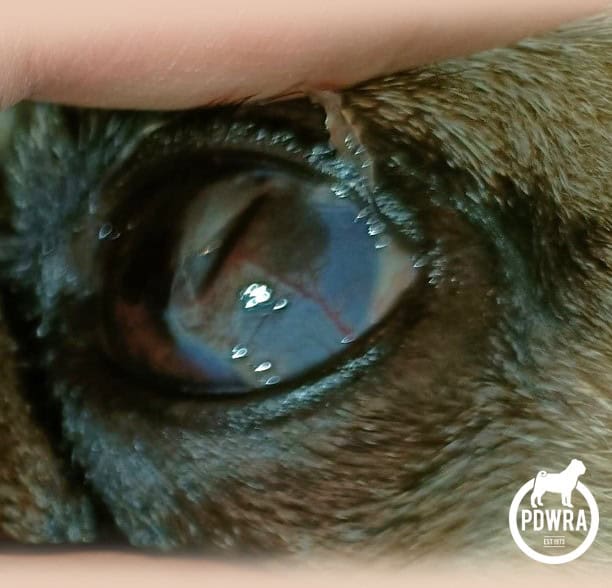Eye Problems.
Entropion, Pigmentary Keratitis & Eye Ulcers.
More information about pug health issues, can be found at: Pug Eyes Health Information-The Pug Breed Council (pughealth.org.uk)
Pugs have a number of significant eye conditions caused by extreme breeding creating the squashed appearance of the face.
This has resulted in a shallow orbital cavity (the bony area where the eye sits), large palpebral apertures (the exposed eye) and prominent eyeballs. This together with reduction of corneal sensitivity in pugs, leads to a significant number of serious eye conditions, which are mainly due to the exposure of the eyeball and the reduced protection it has.
Helen, PDWRA’s Vet Advisor, writes about this in 2 parts:
Part 1: Corneal Ulcers & Associated Conditions.
Pugs have a number of significant eye conditions caused by extreme breeding creating the squashed appearance of the face.
This has resulted in a shallow orbital cavity (the bony area where the eye sits), large palpebral apertures (the exposed eye) and prominent eyeballs. This together with reduction of corneal sensitivity in pugs, leads to a significant number of serious eye conditions, which are mainly due to the exposure of the eyeball and the reduced protection it has.
Please read Part 1 of 2 by PDWRA Vet Advisor, Helen, at: Pug Eye Conditions: Part 1 of 2- Corneal Ulcers and Associated Conditions | The Pug Dog Welfare & Rescue Association
Part 2: Proptosis, Dry Corneas, Pigmentary Keratitis, Entropion & Distichiasis.
All of these conditions are inter-related; causes of which are similar to those that can result in a corneal ulcer.
Please see: Pug Eye Conditions: Part 2 of 2 – Proptosis, Dry Corneas, Pigmentary Keratitis, Entropion & Distichiasis | The Pug Dog Welfare & Rescue Association
*******
Other PDWRA Pug Health Articles.
These can be found on our webpage:
Pug Health & Wellbeing | The Pug Dog Welfare & Rescue Association





